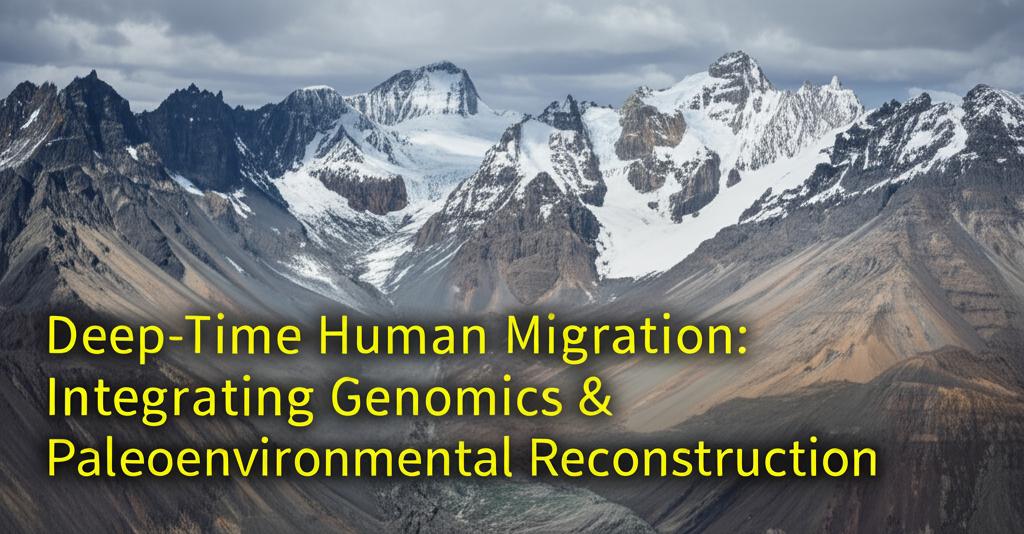The story of humanity is a story of movement. For millennia, our ancestors navigated vast and changing landscapes, driven by shifting climates, the pursuit of resources, and an inherent curiosity to explore. Unraveling these epic journeys across deep time requires a sophisticated toolkit, one that increasingly relies on the powerful combination of ancient DNA (aDNA) analysis and detailed paleoenvironmental reconstructions. This integrated approach is painting a remarkably vivid picture of how, when, and why early humans spread across the globe.
Imagine being able to read the genetic blueprint of people who lived tens of thousands of years ago. This is the reality of modern paleogenomics. Scientists can now extract and sequence aDNA from ancient human remains, and even from sediments in caves where no bones are found. These genetic sequences act like molecular breadcrumbs, allowing researchers to trace ancestral lines, pinpoint when different populations diverged, and identify periods of interbreeding between distinct human groups, such as early modern humans, Neanderthals, and Denisovans. By comparing the genetic makeup of ancient individuals with modern populations, scientists can reconstruct complex migration routes and understand the genetic legacy these ancient travelers left in people alive today.
But the story isn't just in our genes; it's also written in the Earth itself. Paleoenvironmental reconstruction is the other crucial piece of this puzzle. Using an array of techniques, scientists can recreate the climates and landscapes of the past. Analyzing pollen trapped in ancient lakebeds or bogs reveals the types of vegetation that once thrived. Ice cores drilled from glaciers and ice sheets contain trapped air bubbles and chemical signatures that act as archives of past atmospheric conditions and temperatures. Tree rings, sediment layers, and even the isotopic composition of animal bones and shells offer further clues about past rainfall, temperature, and the types of ecosystems that existed.
When these two fields converge, the insights are transformative. For instance, genomic data might reveal a sudden population expansion or a new wave of migration. Paleoenvironmental data can then provide the context: Did this movement coincide with a period of favorable climate that opened new habitable zones? Or perhaps it was driven by environmental pressures, like a cooling period that reduced resources in their original homeland, forcing them to seek new territories.
Recent breakthroughs are illuminating these connections with unprecedented clarity. Studies integrating genomic and paleoenvironmental data have shed new light on the peopling of the Americas, suggesting multiple waves of migration across the Bering Land Bridge and along coastal routes, with ancient populations adapting to dramatically changing environments as ice sheets retreated and megafauna disappeared. In Europe, similar approaches have detailed the complex interplay of migrations, such as the arrival of early farmers from Anatolia and later movements of steppe peoples, and how these events were linked to shifts in vegetation and climate.
The integration of these fields is also revealing the physiological adaptations our ancestors underwent. As humans migrated into new, often harsher environments – from the high altitudes of mountain ranges to the frigid landscapes of the Arctic – their genomes evolved. Specific genetic variations related to metabolism, immune response, and even physical traits show signs of positive selection, indicating how these groups adapted to local diets, pathogens, and climatic conditions. For example, research has shown how introgressed genes from Neanderthals and Denisovans, ancient hominins who had already adapted to colder Eurasian climates, may have provided beneficial traits to modern humans arriving from Africa.
Furthermore, advanced computational methods, including AI, are now being employed to model ancient human movements and landscape changes with greater precision. These models can simulate how different climatic scenarios might have influenced migration routes and the carrying capacity of environments, offering testable hypotheses for archaeologists and geneticists.
The journey into our deep past is far from over. Each new ancient genome sequenced and every paleoenvironmental record meticulously analyzed adds another piece to the intricate mosaic of human migration. By continuing to weave together the threads of genomic data and environmental reconstruction, we are not just mapping the movements of our ancestors, but also gaining a profound understanding of our species' remarkable resilience, adaptability, and enduring connection to the planet we inhabit. This knowledge not only enriches our understanding of who we are and where we came from but can also offer valuable perspectives on how human populations might respond to environmental changes today and in the future.

